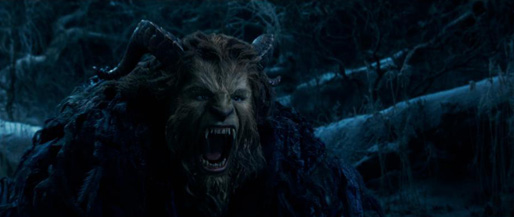|
|
Movie Review: Beauty and the BeastBy Ben GruchowMarch 24, 2017
The Beast himself is the film’s biggest weak spot, and this owes more to him being, as designed, uniquely suited for animation and uniquely unsuited for realistic fur and limb and muscle movement. I recall the scene from the 1991 film, where the Beast rescues Belle from the wolves, and we see the animalistic façade fade from his face a second before he collapses from injury. Implications of character motivation aside, it's a great moment in the expressive power of animation, and one in which this new version’s equivalent - and there are a lot of equivalents here - is entirely incapable. The movie’s thundering inessentiality and hidebound nature toward its predecessor never quite stop being a liability. Good narratives allow us to feel the presence of an invisible hand guiding events and developments in organic ways. With this film, the hand guiding it is explicitly a film that carried out its events in superior ways, and after we realize that nothing is going to be different (this realization takes all of a couple of minutes), we become that invisible hand by virtue of our familiarity with the story. We know what's about to happen, and it's a deflating feeling. This fealty and predictability is also what somewhat insulates the movie from being worse: yes, it's an inferior photocopy, but it's also adhering to a story and characters strong enough to be functional even in watered-down form. And yes, there are isolated moments where that strength allows us to feel something for these versions of the character: not the Beast, but occasionally Belle courtesy of Emma Watson’s committed performance, and Luke Evans gives his Gaston at least the promise of an additional dimension that lets us view him momentarily as something more than an antagonist. It's just all overruled by banal decisions either loyalty-based or all of its own making (ex: taking the character of Le Fou and, pointlessly, making him gay in a way that only serves to resurrect the Evil Queer archetype, no matter where his loyalties ultimately lie). By the end, as the wispy strands of the movie begin evaporating, we realize we've just spent two hours sitting and listening to Disney tell us, “Remember that thing you loved? Here it is again, in the same way, but longer and with less visual distinction, and a few wrinkles.” There are worse ways than this to spend our time, but there are also incalculably better. 2.5 out of 5
|

|
|
|

|
Friday, November 1, 2024
© 2024 Box Office Prophets, a division of One Of Us, Inc.


